How is the silent switch impacting your content?
As a PR adviser since 2005 and a digital strategist since 2007, I’ve seen the silent switch take over — one seamless iteration after another.
As PR- and communications professionals, we should all be aware of what has happened — and what’s still happening.
In this blog article, I explain how social media algorithms silently have been centralised into a series of global Pavlovian experiments.
Here we go:
The Silent Switch
Spin Academy | Online PR Courses
Algorithms: The Silent Switch
Not that long ago, social media algorithms would deliver organic reach according to a distribution that looked like this:
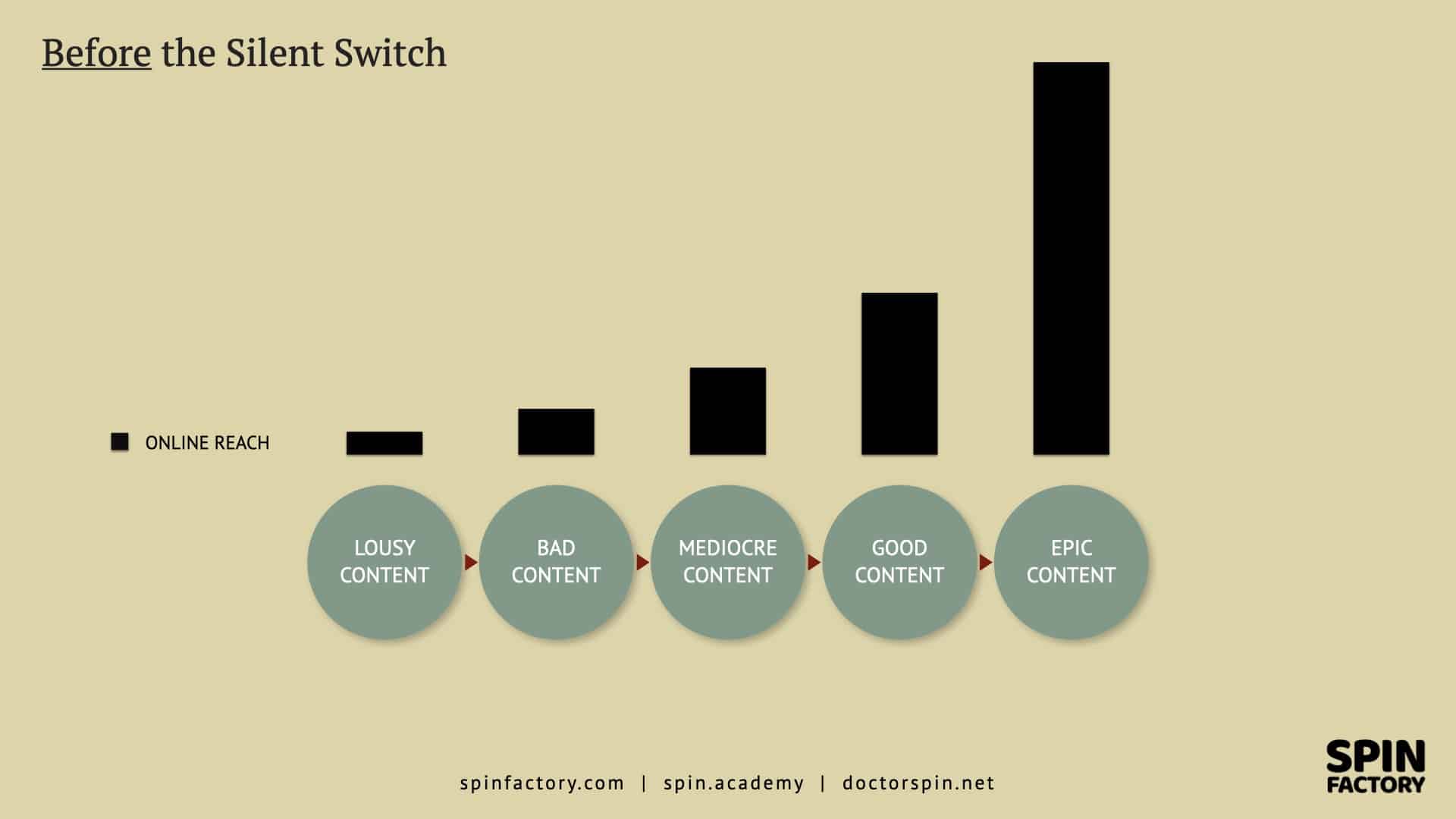
Today, social media algorithms deliver organic reach more like this:
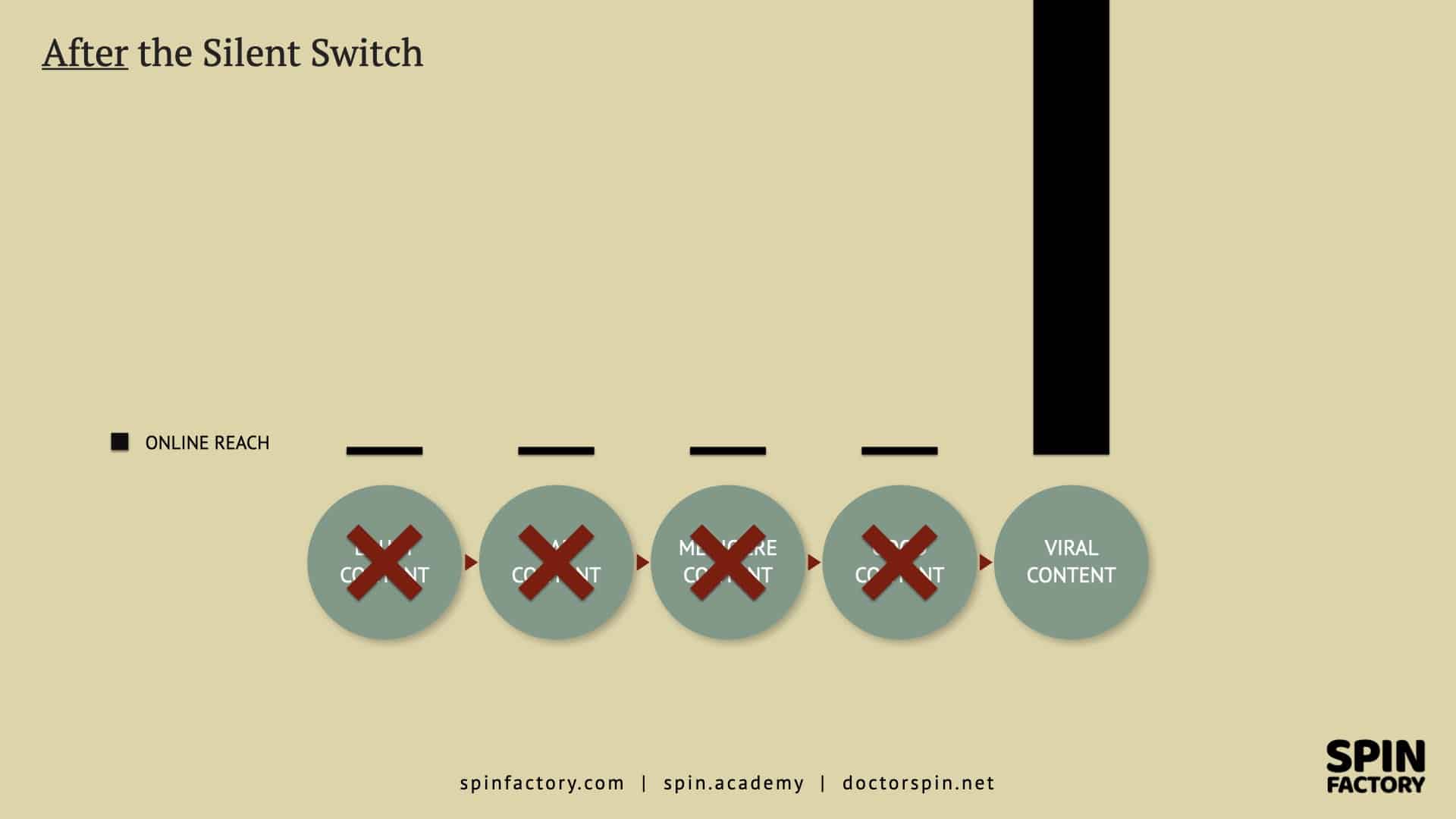
It’s the Silent Switch where social networks have demoted the publisher’s authority and reputation and promoted single content performance instead.
This algorithmic change has likely had profound and severe media logic amplifications:
Classic Media Logic Effects
Media logic is hypothesised to influence the news media in the following ways: 1Nord, L., & Strömbäck, J. (2002, January). Tio dagar som skakade världen. En studie av mediernas beskrivningar av terrorattackerna mot USA och kriget i Afghanistan hösten 2001. … Continue reading
Social Media Logic Effects
Our job as PR professionals is to help organisations navigate the media landscape and communicate more efficiently, especially during times of change.
Learn more: The Silent Switch: How Algorithms Have Changed
💡 Subscribe and get a free ebook on how to get better PR ideas.

Making Subscribers Redundant
Like many others interested in photography, I subscribe to Canadian content creator Peter McKinnon on YouTube. I’m not alone — 5,55 million subscribers follow McKinnon as I write this.
5,55 million is a respectable audience; millions of YouTube users have actively chosen to follow McKinnon’s future updates.
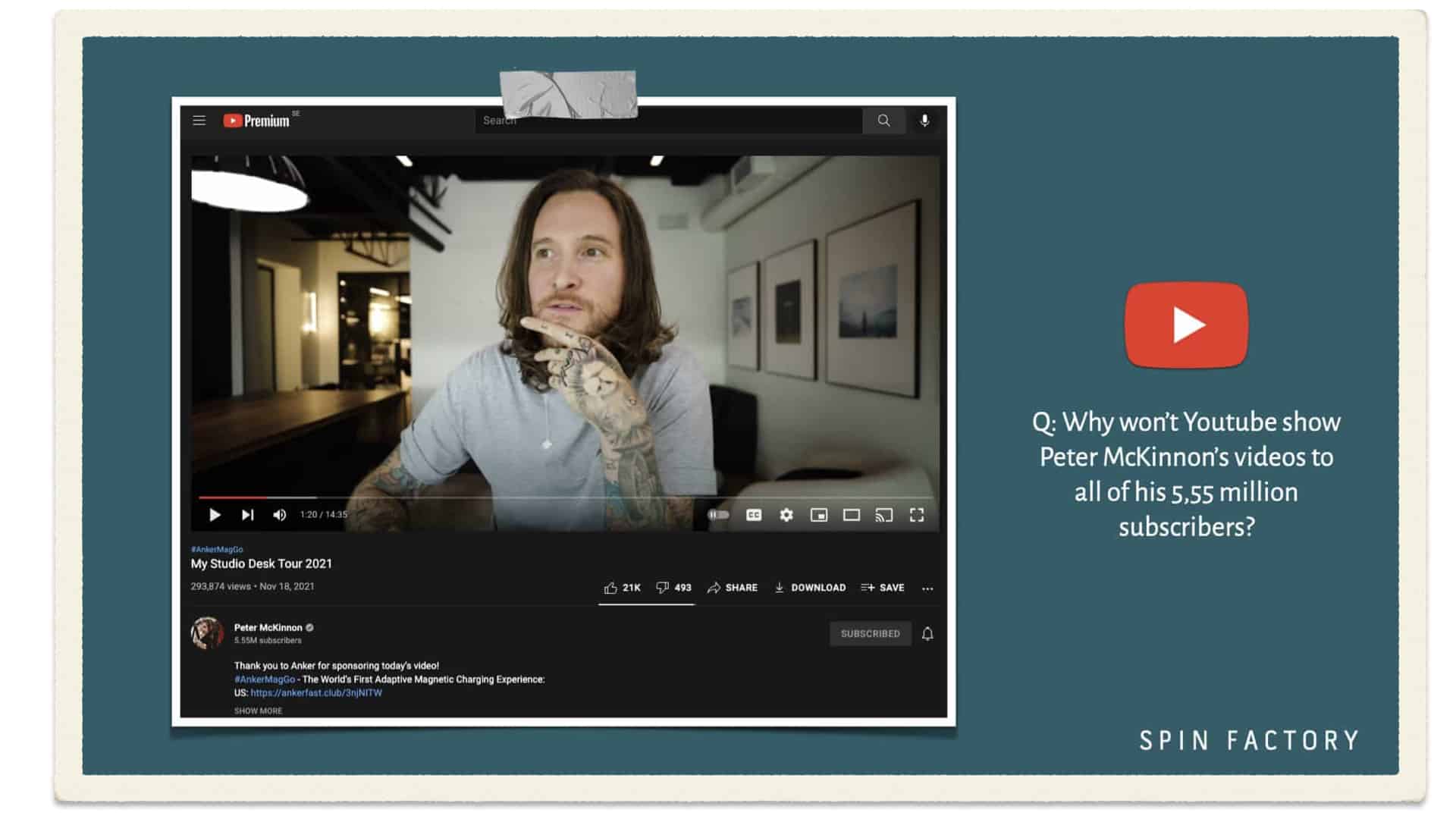
Still, it’s not uncommon for McKinnon’s regular videos to acquire only a few hundred thousand views.
Don’t get me wrong: I’m not saying that a few hundred thousand views are something to sneeze at. And I’m not saying we should feel sorry for online mega-influencers, either.
We should ask why acquiring social media subscribers, fans, and followers seems less significant today. After all, followers drive most content creators to social media in the first place.
A few hundred thousand views is a lot — but it’s not 5,55 million. And it’s reasonable to assume that 5,55 million subscribers haven’t actively decided against watching McKinnon’s video. The video just hasn’t been suggested to them.
Earning many subscribers, fans, and followers used to matter a lot, but nowadays, it matters less. Although McKinnon has 5,55 million YouTube subscribers, it doesn’t mean his videos have that kind of reach. Something else is at play here.
From Trust To Sensation
So, why have Facebook, Instagram, LinkedIn, and many other social networks gone to such great lengths to render subscribers, fans, and followers less valuable to content creators?
Here’s a historical explanation:
In the early days of social networks, feeds relied on network-based distribution — the more central the network node, the greater the reach.
Clean and classy. To have a higher reach, you had to earn an audience’s trust by establishing it over a longer period.
Today, other selection criteria dominate our social media feeds. Reach is rewarded not to content creator authority but to individual content pieces based on their single performance.
We have slowly moved from network distribution based on content creator authority to algorithmic distribution based on single content performance.
Network- vs Algorithmic Distribution
Instead of showing users content based on who they’ve decided to follow, algorithms expose audiences to single content pieces based on standardised content tests.
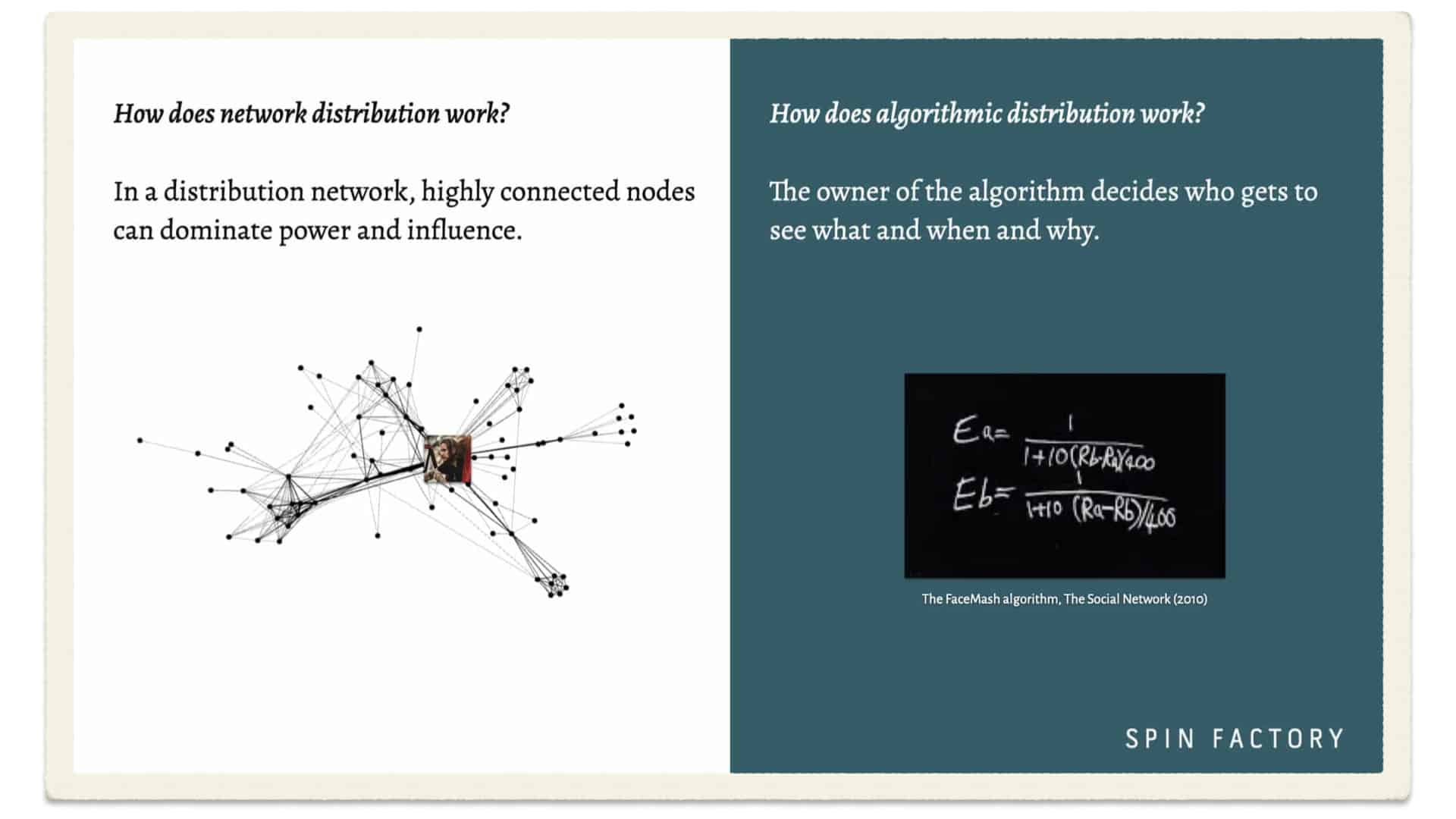
The YouTube algorithm won’t show Peter McKinnon’s content to all his 5,55 million subscribers.
Instead, YouTube shows a new McKinnon video to a small statistical subset of users. If the video passes the small first test, the video is then shown to a slightly larger statistical subset.
The video could stop at 200,000 views — or climb to 2 billion views. It depends on that single piece of content, not how many followers the creator has amassed.
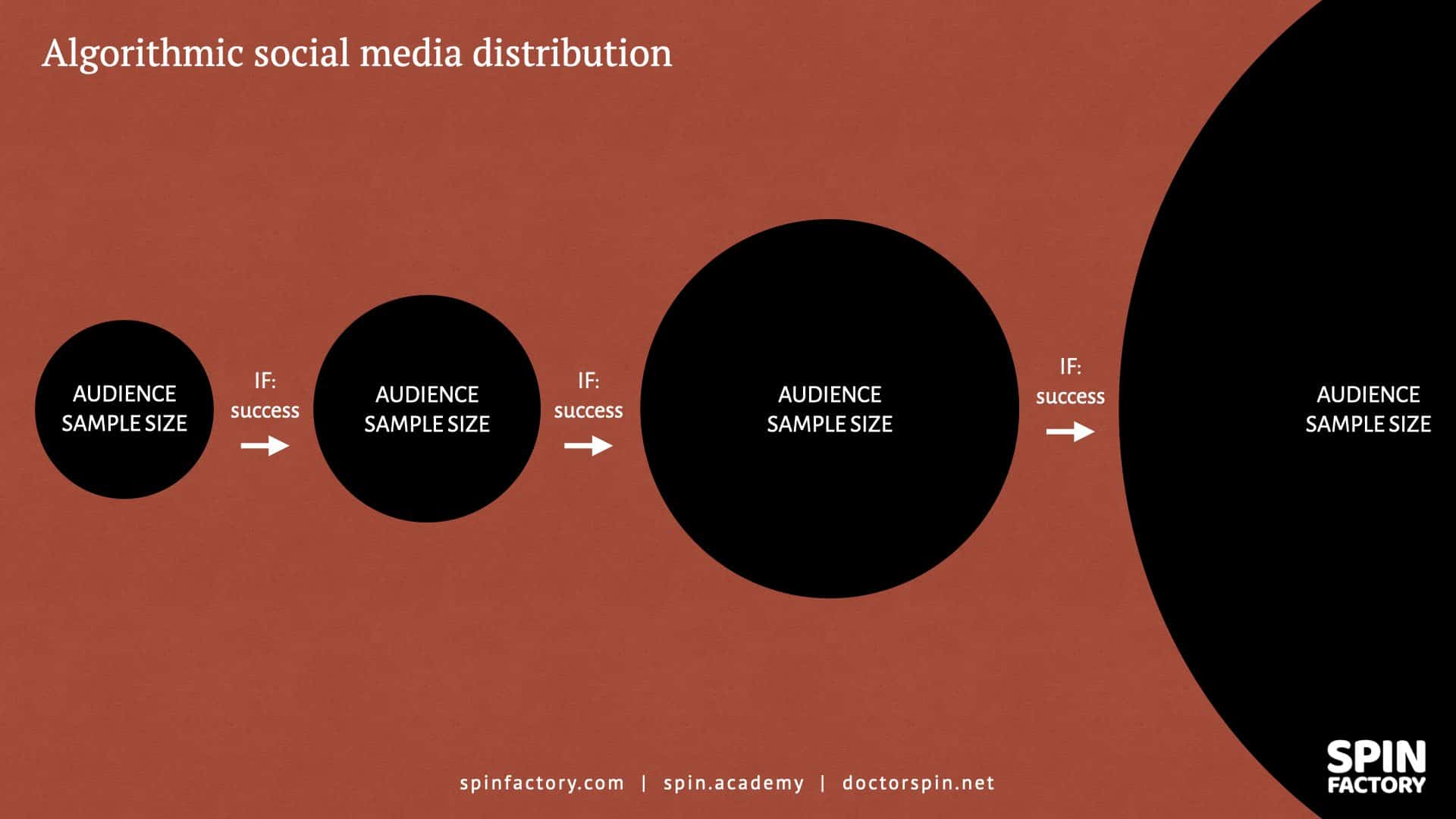
Doesn’t a successful social media influencer already enjoy a massive reach at his fingertips? Aren’t powerful online influencers already making enough money?
Here, we’re entering into a new era of the internet.
The Hippie Web is Dead (2005 – 2015)
I love the idea of the social web. I love the idea of a democratic and neutral space where everyone has a voice, communities can form unbound by geographical constraints, and everyone is connected.
“Here comes everybody,” Clay Shirky wrote.
Two decades ago, the network-based Hippie Web (2005 – 2015) had a burgeoning blogosphere and lively forums where anyone could discuss ideas and join together in communities around causes and interests. 2Silfwer, J. (2015, January 22). The Hippie Web is Dead (2005 – 2015). Doctor Spin | The PR Blog. https://doctorspin.net/hippie-web/
Social media optimists cited The Cluetrain Manifesto and fought for net neutrality. Sharing was caring.
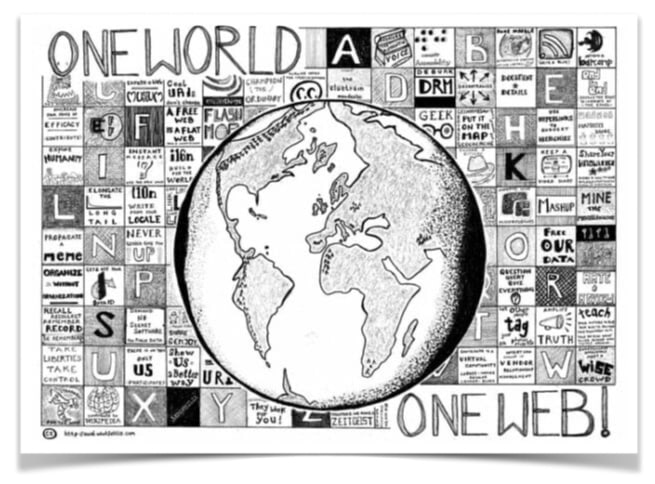
The widespread notion was that information wanted to be free, an ideology spearheaded by open-source enthusiasts. We saw the advent of Napster and The Pirate Bay.
The Hippie Web was fun, but it had to end at some point.
We weren’t making enough money, frankly.
Enter the Money Web (2016 – Present)
“So what’s the Original Sin of the Internet? Nearly all business models it supports require spying on consumers and monetising them.”
— Bob Sullivan, author and journalist
Enter the Money Web (2016 – present). 3Silfwer, J. (2015, September 8). Enter the Money Web (2016 – Present). Doctor Spin | The PR Blog. https://doctorspin.net/money-web/
Today, successful influencers can earn a full-time living as online content creators. Not only that — they can get rich. We have a new and growing creative class of entertainers and educators.
The digital economy is growing, and we reward those who can attract people’s attention. Monetisation allows content creators to go full-time, which is impossible otherwise. Having algorithms designed to get people to click on ads is essential.
However, the algorithm owners are setting the stage, not the creatives. Content must drive clicks, and creators must produce content that drives those clicks.
Why Tech Giants Are Switching Away
I think of Jan Stenbeck (1942 – 2002), the legendary Swedish entrepreneur. His business philosophy, as described by biography author Per Andersson, can be summed up: 4Jan Stenbeck. (2023, December 26). In Wikipedia. https://en.wikipedia.org/wiki/Jan_Stenbeck 5Per Andersson (journalist). (2024, January 10). In Wikipedia. https://sv.wikipedia.org/wiki/Per_Andersson_(journalist)
There are three main reasons social media tech giants move from network distribution to algorithmic distribution:
New Rule: Winner-Takes-All
The Silent Switch from network-based to algorithm-based distribution changes the game for everyone. Especially for us PR professionals.
For those of us who create online content on behalf of an organisation, the effects of the silent switch can be devastating.
On the “classic” pre-money social web, where earning subscribers, fans, and followers, even not-so-spectacular corporate content found its way to reasonable audience sizes.
But on today’s Money Web, where algorithmic distribution disregards earning trust over earning clicks, sensationalism prevails in a winner-takes-all scenario.
In a way, the playing field today is levelled. As long as you’re prepared to invest heavily in the risky business of creating the type of sensational content that ultimately drives ads, that is.
Theoretically, algorithmic distribution should produce better content through competition.
But what constitutes “better?”
The problem under this new paradigm is fundamental — loyalty and trust are non-rewarded behaviours.
A Global Pavlovian Experiment on Humans
I hear many people discussing online influencers. They have a fascinating — and often provocative! — allure.
The provocation is apparent:
Many successful content creators produce notable earnings by churning out sensational content.
In a sense, the phenomenon is not novel: Neil Postman warned us that we might amuse ourselves to death. And that was back in 1985!
Also, you don’t need to be an Ayn Rand ideologist to suggest that private companies strive for profits. No one forces Peter McKinnon and other video creators to play by YouTube’s rules.
However, as PR professionals, we must adapt and follow these new rules. We have no other choice. Digital is way too prominent to be ignored:
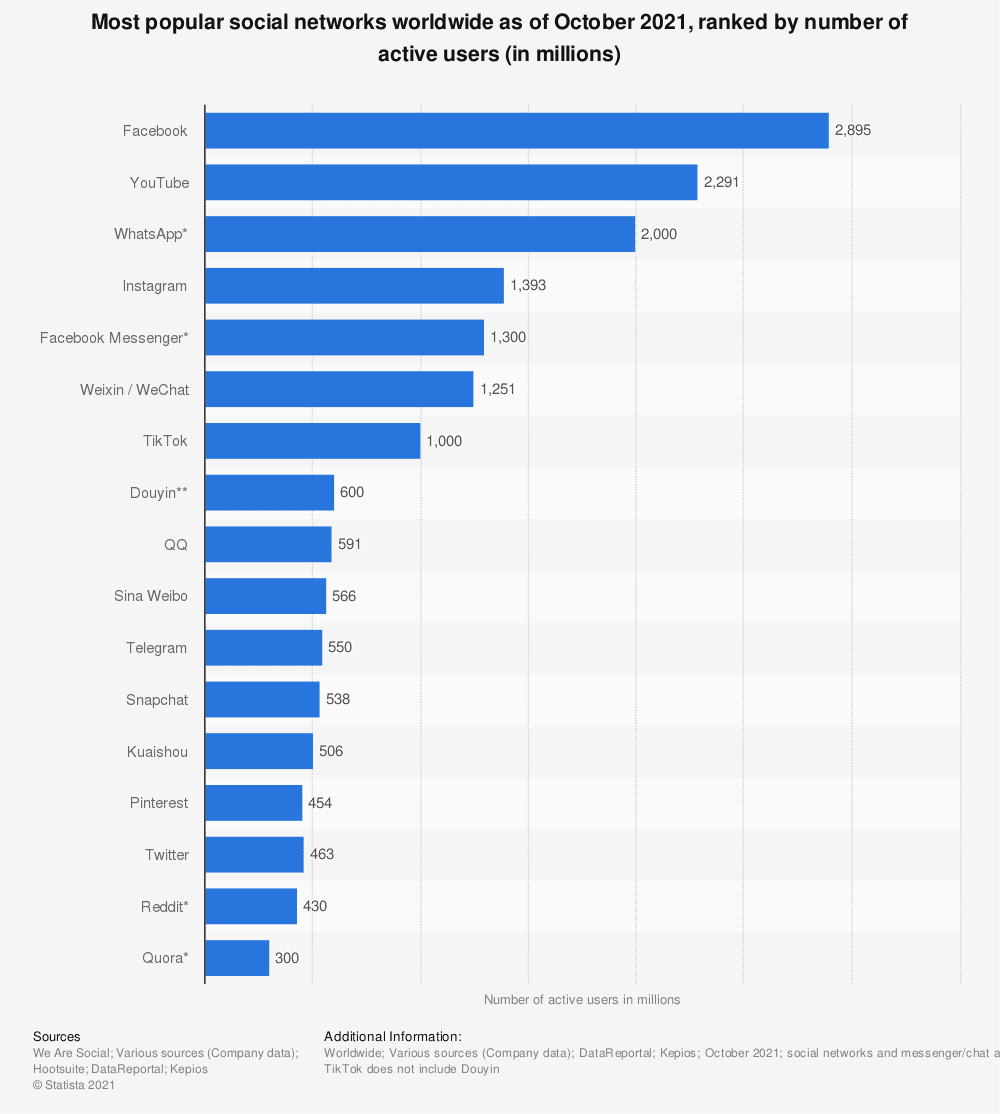
Tech giants have asked their audiences to permit them to run large-scale Pavlovian experiments on us, and they have permitted them.
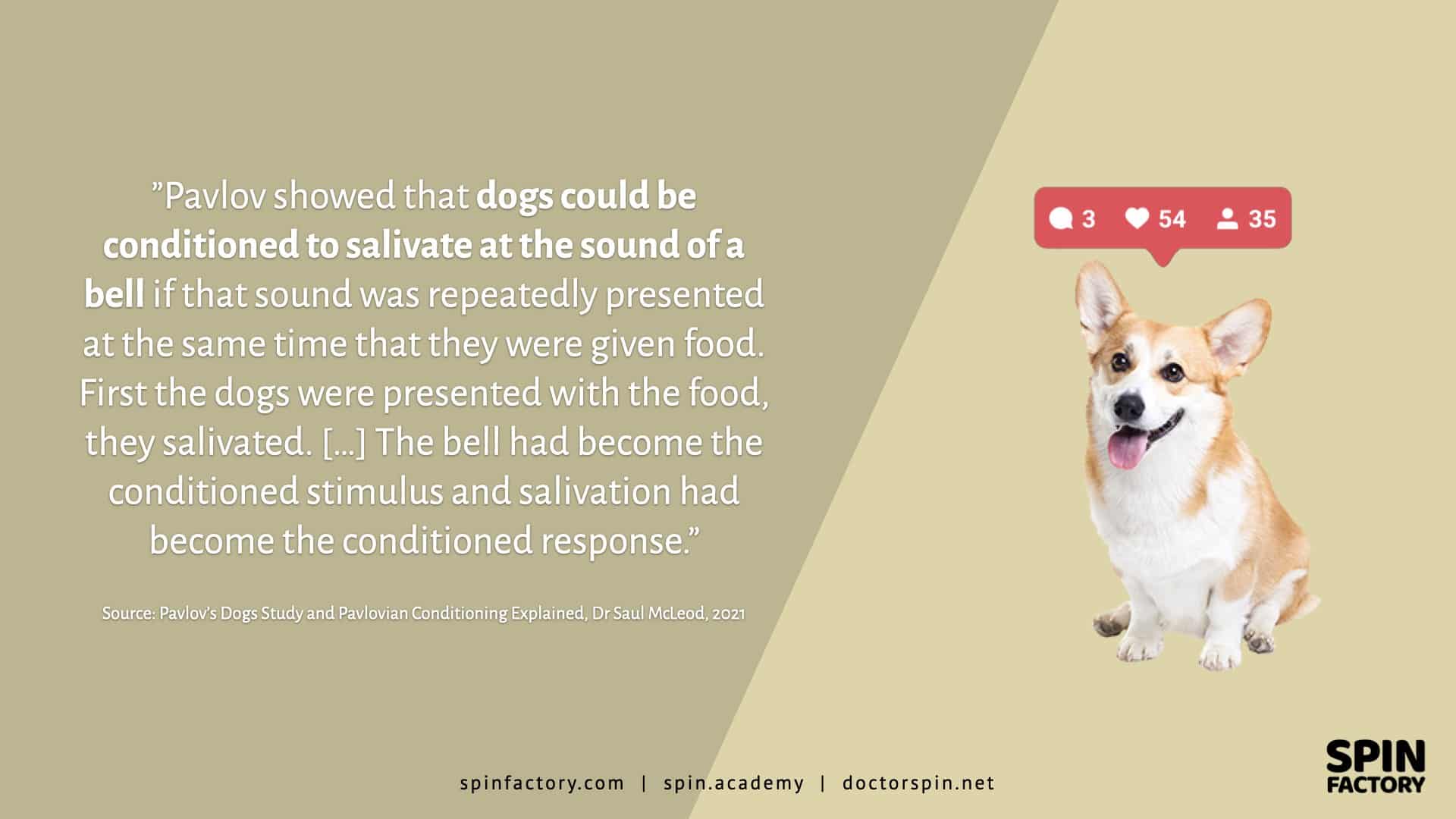
It’s no coincidence that terms of services are lengthy and hard-to-read disclaimer documents designed for scrolling past while their main content is dopamine-inducing click baits.
Love it, hate it. If you’re a PR professional, it doesn’t matter.
If the playbook is changing, so must we.
Those Who Crush the Algorithm
Content that attracts instantaneous momentum and makes a big splash throughout each iterative testing series will outperform other content types.
As for YouTube, this is perhaps most clearly demonstrated by the record-breaking MrBeast:
The fact that MrBeast has millions of followers on YouTube is not fundamental for his continuous success — his extravagant, over-the-top videos would go viral regardless of which account posted them. 6 I’ve conducted several in-depth interviews with MrBeast, and it’s clear that he’s a brilliant content creator who published videos on YouTube for a long time before his public breakthrough.
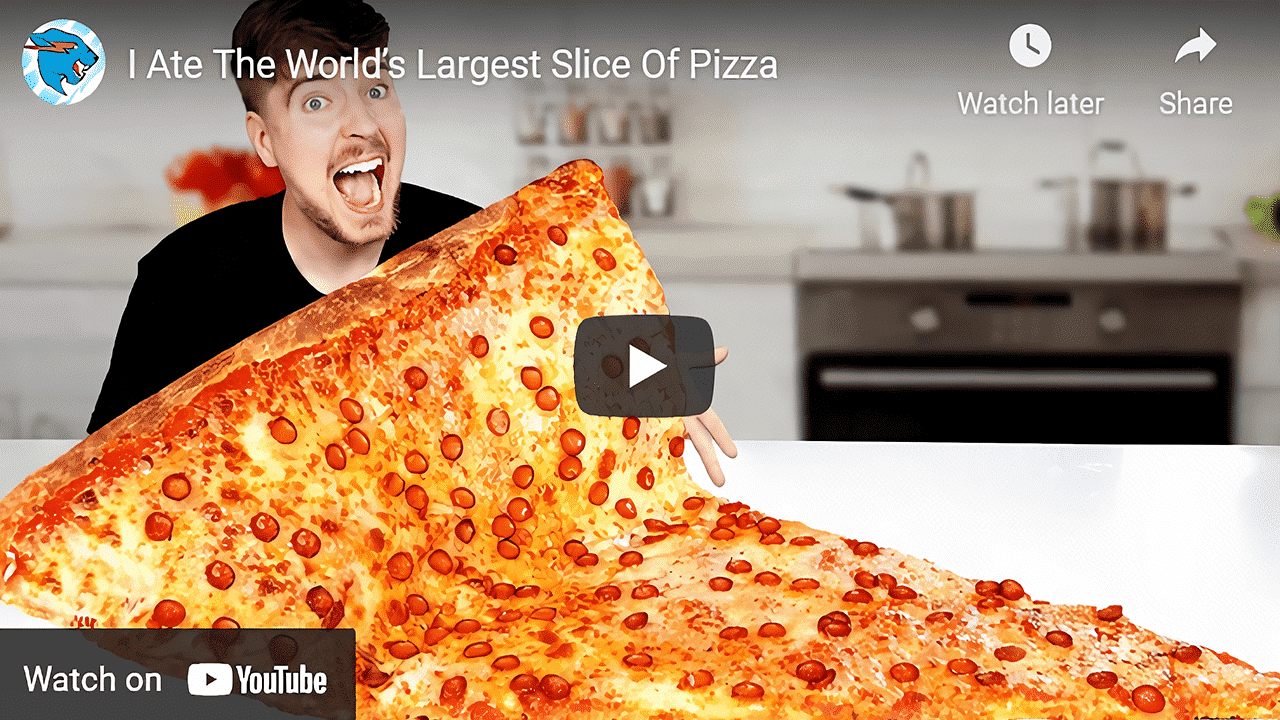
Here’s the point: Algorithmic distribution doesn’t mean content creators can’t reach a vast audience. Innovative creators, like MrBeast, will find ways to negotiate the algorithms and go viral repeatedly.
While we can appreciate MrBeast’s videos as welcome distractions, as pure dopamine-infused entertainment for the masses, we might be missing out on content created by individuals and organisations that could’ve reached their already-earned subscribers, fans, and followers.
Today, social media needs user-generated content more than ever. But they don’t need mediocre corporate content. They’d much rather have our budgets.
For PR, this is rough but not unfair.
Why PR Professionals Must Adapt
Many organisations have spent serious resources attracting subscribers, fans, and followers on social media. But the value of having subscribers, fans, and followers is quickly eroding.
As PR professionals, we must be rational.
We should compare the current situation with our long-standing relationship with traditional news media. Traditional news media is powerful but imperfect, so PR professionals must manage the media. The same goes for social media.
It’s not our place as professional communicators to tell journalists how to do their jobs, just as it isn’t our place to tell tech giants or content creators how to do their business.
We must help organisations navigate the complexity of the modern media landscape, and algorithms are a natural part of that complexity.
The silent switch has profound and severe implications for our society. However, our job as PR professionals isn’t to fix any of these problems but to help organisations communicate efficiently in times of change.
Our job is identifying significant changes where the silent switch is fundamental and finding ways to improve organisational communication.

Thanks for reading. Please support my blog by sharing articles with other communications and marketing professionals. You might also consider my PR services or speaking engagements.
PR Resource: The 7 Graphs of Algorithms
Spin Academy | Online PR Courses
Types of Algorithm Graphs
Search engines, social networks, and online services typically have a wealth of user data to optimise the user experience.
Here are examples of different types of graphs that social media algorithms use to shape desired behaviours:
The different graphs are typically weighted differently. For instance, some media companies allow a fair degree of social graph content, while others offer almost none. Changes are constantly being enforced, and the silent switch might be the most notable example of a media company shifting away from the social graph. 7Silfwer, J. (2021, December 7). The Silent Switch — A Stealthy Death for the Social Graph. Doctor Spin | The PR Blog. https://doctorspin.net/silent-switch/
The media company can leverage these graphs using two main approaches:
Today, profiling seems to be the dominant approach amongst media companies.
Learn more: The 7 Graphs of Algorithms: You’re Not Unknown
💡 Subscribe and get a free ebook on how to get better PR ideas.

ANNOTATIONS
| 1 | Nord, L., & Strömbäck, J. (2002, January). Tio dagar som skakade världen. En studie av mediernas beskrivningar av terrorattackerna mot USA och kriget i Afghanistan hösten 2001. ResearchGate; Styrelsen för psykologiskt försvar. https://www.researchgate.net/publication/271014624_Tio_dagar_som_skakade_varlden_En_studie_av_mediernas_beskrivningar_av_terrorattackerna_mot_USA_och_kriget_i_Afghanistan_hosten_2001 |
|---|---|
| 2 | Silfwer, J. (2015, January 22). The Hippie Web is Dead (2005 – 2015). Doctor Spin | The PR Blog. https://doctorspin.net/hippie-web/ |
| 3 | Silfwer, J. (2015, September 8). Enter the Money Web (2016 – Present). Doctor Spin | The PR Blog. https://doctorspin.net/money-web/ |
| 4 | Jan Stenbeck. (2023, December 26). In Wikipedia. https://en.wikipedia.org/wiki/Jan_Stenbeck |
| 5 | Per Andersson (journalist). (2024, January 10). In Wikipedia. https://sv.wikipedia.org/wiki/Per_Andersson_(journalist) |
| 6 | I’ve conducted several in-depth interviews with MrBeast, and it’s clear that he’s a brilliant content creator who published videos on YouTube for a long time before his public breakthrough. |
| 7 | Silfwer, J. (2021, December 7). The Silent Switch — A Stealthy Death for the Social Graph. Doctor Spin | The PR Blog. https://doctorspin.net/silent-switch/ |



